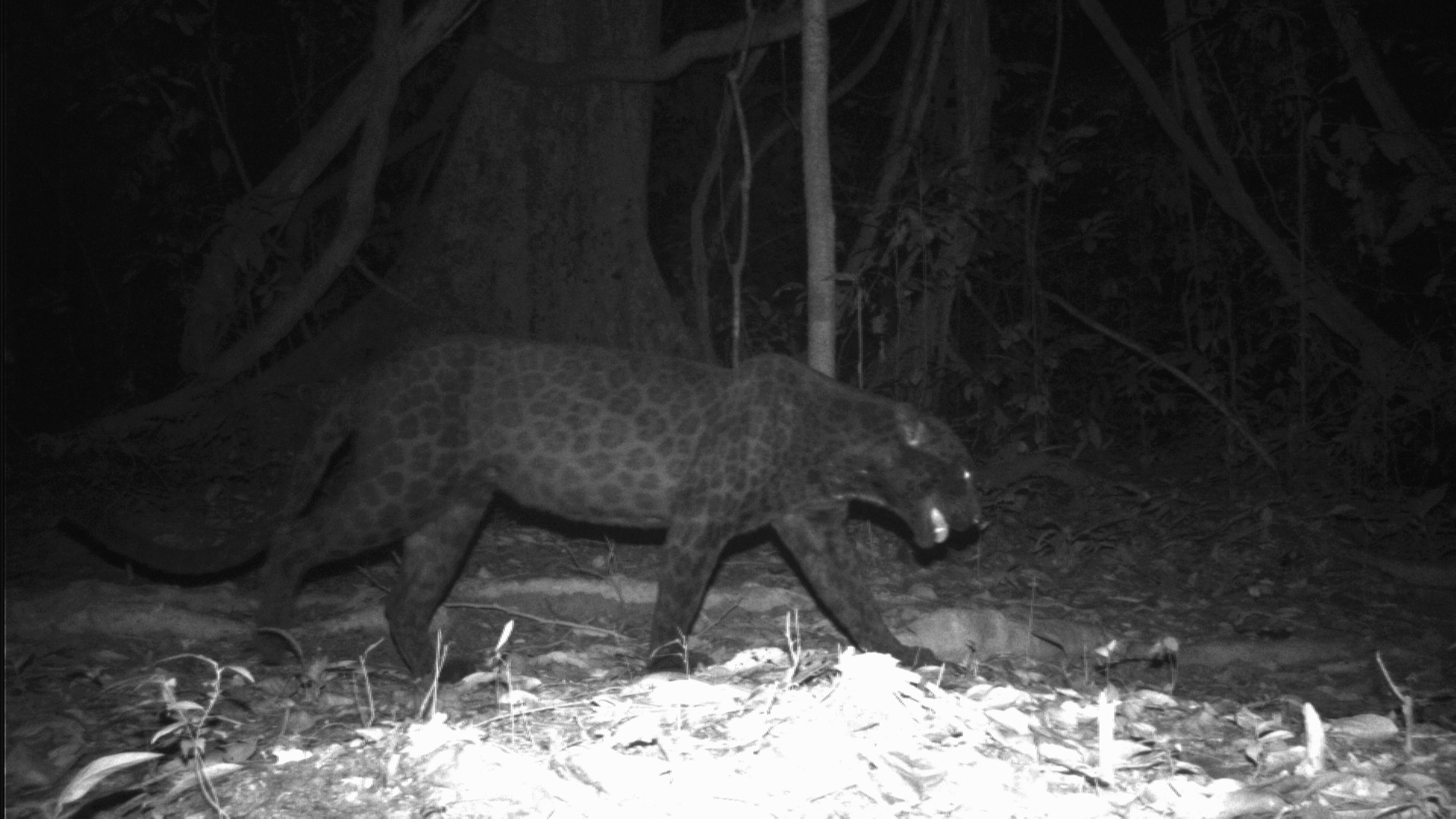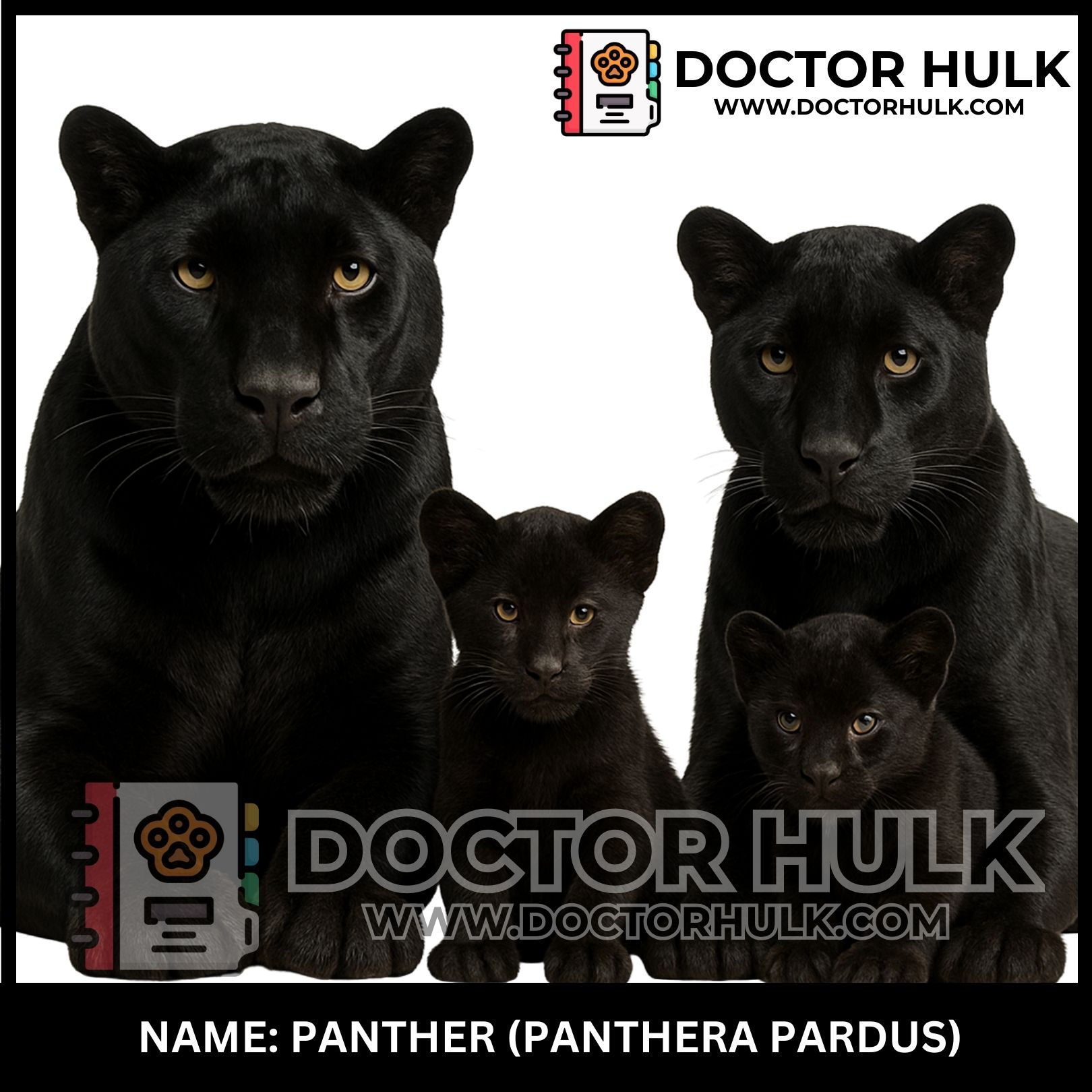A panther is a type of large, powerful wild cat, often used as a general term for a few different species. These cats are known for their sleek, muscular bodies, sharp claws, and powerful jaws. Panthers are usually characterized by their glossy black fur, though they can also have spots or markings that are harder to see due to their dark color.
Panthers are strong, stealthy hunters that live in a variety of environments, including forests, swamps, and grasslands. They primarily hunt alone and are skilled at stalking and ambushing prey like deer, wild boar, and smaller animals. Despite their size, they are incredibly agile and can climb trees or swim across rivers if they need to.
Scientific Classification
-
Genus: Panthera
-
Common Black Panther in Africa/Asia: A black leopard (Panthera pardus)
-
Common Black Panther in the Americas: A black jaguar (Panthera onca)
-
Family: Felidae (Cat family)
-
Class: Mammalia (Mammals)
Where do Panthers live?
Panthers can be found in:
-
Africa
-
Asia (India, Sri Lanka, Malaysia)
-
South & Central America
They like rainforests, mountains, and swampy areas, anywhere there’s lots of cover to hide and hunt.
What do Panthers look like?
-
Color: Black or very dark brown
-
Their black fur comes from a condition called melanism (extra dark pigment)
-
If you look closely under the light, you can still see spots or rosettes.
-
Strong jaws, sharp claws, and big paws
-
Golden or green glowing eyes
 Image showing a panther walking through a dark forest (Source: Panthera.org)
Image showing a panther walking through a dark forest (Source: Panthera.org)
Are they nocturnal?
Yes, Panthers are mostly nocturnal hunters. They use the cover of darkness and their black coats to sneak up on prey. They are silent, agile, and lightning-fast.
What do Panthers eat?
Panthers are carnivores. Their diet includes:
-
Deer
-
Wild pigs
-
Monkeys
-
Birds
-
Small reptiles
They’re ambush predators, they quietly creep up and pounce.
Panther vs. Leopard vs. Jaguar
| Feature | Leopard (Africa/Asia) | Jaguar (Americas) |
|---|---|---|
| Black Panther Form | Yes (Black Leopard) | Yes (Black Jaguar) |
| Build | Slimmer, longer legs | Stockier, powerful jaws |
| Spots | Rosettes with no dots | Rosettes with dots inside |
| Bite Force | Moderate | Strongest of all cats! |
Fun facts about Panthers
-
Panthers are great tree climbers and often hide prey on branches!
-
They are also strong swimmers, especially jaguars in the Amazon.
-
A group of panthers is called a leap or a claw.
-
Melanism (black coat) is the opposite of albinism.
-
Panthers rarely roar—they growl, hiss, and make deep chuffing sounds.
Panther health (in captivity or wild)
Veterinarians who work with panthers monitor for:
-
Parasites
-
Dental issues (important for hunting)
-
Injuries from fights or hunting accidents
-
Nutritional needs in zoos
Panthers need lots of space, mental stimulation, and privacy to stay healthy.
Threats to panthers
-
Deforestation
-
Illegal hunting (poaching)
-
Conflict with humans (especially farmers)
-
Habitat loss
Black panthers are especially rare and face greater risk due to being so few in the wild.
Conservation Status
-
Black panthers aren’t listed separately, they’re part of the leopard or jaguar population.
-
Some subspecies of leopards and jaguars are Endangered or Vulnerable.
-
Conservationists are working to protect their natural habitats and reduce human conflict.
Panther Symbolism
-
Power
-
Mystery
-
Protection
-
Used by superheroes like Black Panther as a symbol of strength and dignity.
At Doctor Hulk Veterinary Hospital, we love teaching about wild creatures like panthers. You can reach out to us or call 08143397614.
















Reviews
There are no reviews yet.